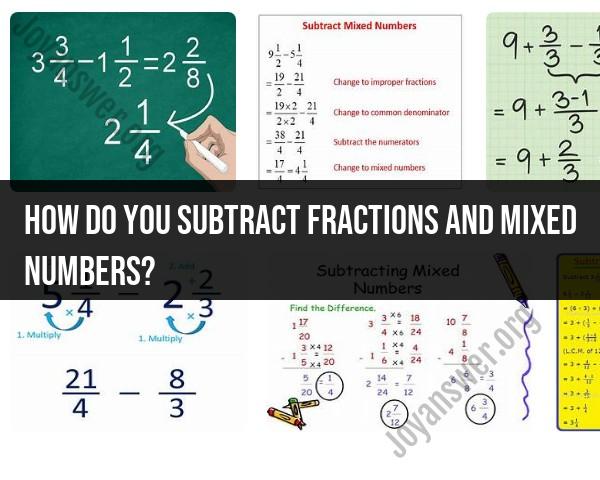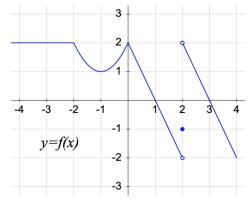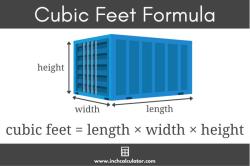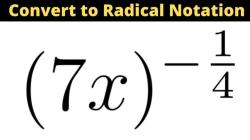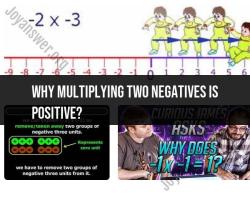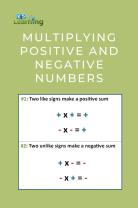How do you subtract fractions and mixed numbers?
Subtracting fractions and mixed numbers involves finding a common denominator, performing the subtraction, and simplifying the result. Here are the methods for subtracting fractions and mixed numbers:
Method 1: Subtracting Fractions
Find a Common Denominator:
- Identify a common denominator for the fractions you want to subtract. The common denominator is the same for both fractions.
- If the fractions already have a common denominator, you can skip this step.
Express Fractions with a Common Denominator:
- Rewrite both fractions with the common denominator. To do this, you may need to adjust the numerators as well.
- For example, if you're subtracting 1/4 from 3/8, you can use a common denominator of 8, making the fractions 3/8 and 2/8.
Subtract the Numerators:
- Subtract the numerators while keeping the common denominator the same.
- In the example above, 3/8 - 1/4 becomes (3 - 2)/8, which is 1/8.
Simplify (if necessary):
- Simplify the result, if needed, by reducing the fraction to its simplest form.
- In the example, 1/8 is already in its simplest form.
Method 2: Subtracting Mixed Numbers
Convert Mixed Numbers to Improper Fractions:
- Convert the mixed numbers to improper fractions, which are fractions where the numerator is greater than or equal to the denominator.
- For example, convert 2 3/4 to the improper fraction 11/4.
Find a Common Denominator:
- Identify a common denominator for the improper fractions.
Express Fractions with a Common Denominator:
- Rewrite both improper fractions with the common denominator, adjusting the numerators as necessary.
Subtract the Numerators:
- Subtract the numerators while keeping the common denominator the same.
Simplify (if necessary):
- Simplify the result, if needed, by reducing the fraction to its simplest form.
Example:
Subtract 2 3/4 from 4 1/2.
Convert both mixed numbers to improper fractions: 4 1/2 becomes 9/2, and 2 3/4 becomes 11/4.
Find a common denominator, which is 4.
Express the fractions with a common denominator: 9/2 becomes 18/4, and 11/4 remains the same.
Subtract the numerators: 18/4 - 11/4 = (18 - 11)/4 = 7/4.
Simplify the result if necessary: 7/4 is already in its simplest form.
So, 4 1/2 - 2 3/4 equals 7/4 or 1 3/4 when expressed as a mixed number.
Sure, here is a step-by-step guide to subtracting fractions and mixed numbers:
Subtracting Fractions
- Find the common denominator of the two fractions. This is the smallest number that is a multiple of both denominators.
- Convert each fraction to an equivalent fraction with the common denominator.
- Subtract the numerators.
- Keep the denominator the same.
- Simplify the fraction, if necessary.
Subtracting Mixed Numbers
- Separate the whole numbers from the fractional parts of each mixed number.
- Subtract the whole numbers.
- Subtract the fractions.
- Combine the whole and fractional parts into a mixed number.
Common Techniques for Finding a Common Denominator
There are a few common techniques that can be used to find a common denominator:
- Prime factorization: This involves factoring each denominator into its prime factors. The common denominator is then the product of all the prime factors, raised to the highest power that they appear in either denominator.
- Least common multiple (LCM): This is the smallest number that is a multiple of both denominators. To find the LCM, you can use a variety of methods, such as the prime factorization method or the list method.
Handling borrowing and regrouping in mixed number subtraction
When subtracting mixed numbers, it is sometimes necessary to borrow and regroup. Borrowing is when you take a unit from the whole number part of a mixed number to add to the fractional part. Regrouping is when you move a unit from the fractional part of a mixed number to the whole number part.
Simplifying and expressing the result in proper or mixed number form
Once you have subtracted the fractions or mixed numbers, you may need to simplify the result. This means converting the result to its lowest terms.
To simplify a fraction, you can divide the numerator and denominator by the greatest common factor (GCD). The GCD is the largest number that is a factor of both the numerator and denominator.
To express a mixed number in proper form, the fractional part must be less than the whole number part. If the fractional part is greater than or equal to the whole number part, you can convert the mixed number to an improper fraction.
Word problems and real-life scenarios involving fraction and mixed number subtraction
Here are a few word problems and real-life scenarios involving fraction and mixed number subtraction:
- Word problem: Mary has 3/4 of a pizza. She eats 1/4 of the pizza. How much pizza does she have left?
- Real-life scenario: A baker is making a cake. The recipe calls for 2 1/2 cups of flour. The baker has already used 1 1/4 cups of flour. How much flour does the baker still need?
To solve these problems, you can use the following steps:
- Identify the fractions that you need to subtract.
- Find the common denominator of the fractions.
- Convert each fraction to an equivalent fraction with the common denominator.
- Subtract the fractions.
- Simplify the result, if necessary.
- Express the result in proper or mixed number form, if necessary.
